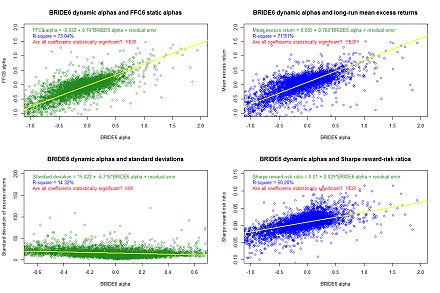

Home > Library > Better corporate ownership governance through worldwide convergence toward Berle-Means stock ownership dispersion
Author Andy Yeh Alpha
We design a model of corporate ownership and control to assess Berle-Means convergence toward diffuse incumbent stock ownership. Berle-Means convergence occurs when legal institutions for investor protection outweigh in relative importance the firm-specific protection of shareholder rights. While these arrangements are complementary sources of investor protection, Berle-Means convergence draws the corporate outcome to the socially optimal quality of corporate governance. High ownership concentration creates perverse incentives for inside blockholders to steer major business decisions to the detriment of both minority shareholders and outside blockholders. Our analysis sheds skeptical light on high insider stock ownership with managerial entrenchment and rent protection.
Description:
We design a model of corporate ownership and control to assess Berle-Means convergence toward diffuse incumbent stock ownership. Berle-Means convergence occurs when legal institutions for investor protection outweigh in relative importance the firm-specific protection of shareholder rights. While these arrangements are complementary sources of investor protection, Berle-Means convergence draws the corporate outcome to the socially optimal quality of corporate governance. High ownership concentration creates perverse incentives for inside blockholders to steer major business decisions to the detriment of both minority shareholders and outside blockholders. Our analysis sheds skeptical light on high insider stock ownership with managerial entrenchment and rent protection.
This analytic ebook cannot constitute any form of financial advice, analyst opinion, recommendation, or endorsement. We refrain from engaging in financial advisory services, and we seek to offer our analytic insights into the latest economic trends, stock market topics, investment memes, and other financial issues. Our proprietary alpha investment algorithmic system helps enrich our AYA fintech network platform as a new social community for stock market investors: https://ayafintech.network.
We share and circulate these informative posts and essays with hyperlinks through our blogs, podcasts, emails, social media channels, and patent specifications. Our goal is to help promote better financial literacy, inclusion, and freedom of the global general public. While we make a conscious effort to optimize our global reach, this optimization retains our current focus on the American stock market.
This ebook shares new economic insights, investment memes, and stock portfolio strategies through both blog posts and patent specifications on our AYA fintech network platform. AYA fintech network platform is every investor's social toolkit for profitable investment management. We can help empower stock market investors through technology, education, and social integration.
2018-09-17 12:40:00 Monday ET

Nobel Laureate Robert Shiller's long-term stock market indicator points to a recent peak. His cyclically-adjusted P/E ratio (or CAPE) accounts for long-
2017-11-29 07:42:00 Wednesday ET

The octogenarian billionaire and activist investor Carl Icahn mulls over steps to shake up the board of SandRidge Energy after the oil-and-gas company adopt
2023-01-11 09:26:00 Wednesday ET

Addendum on USPTO fintech patent protection and accreditation As of early-January 2023, the U.S. Patent and Trademark Office (USPTO) has approved our U.S
2020-10-20 09:36:00 Tuesday ET

Agile lean enterprises remain flexible and capable of reinvention in light of new megatrends such as digitization and servitization. Shane Cragun and Kat
2019-03-11 10:32:00 Monday ET

Lyft seeks to go public with a dual-class stock ownership structure that allows the co-founders to retain significant influence over the rideshare tech unic
2019-12-07 11:30:00 Saturday ET

China turns on its 5G telecom networks in the hot pursuit of global tech supremacy. China Telecom, China Unicom, and China Mobile disclose 5G fees of $18-$2